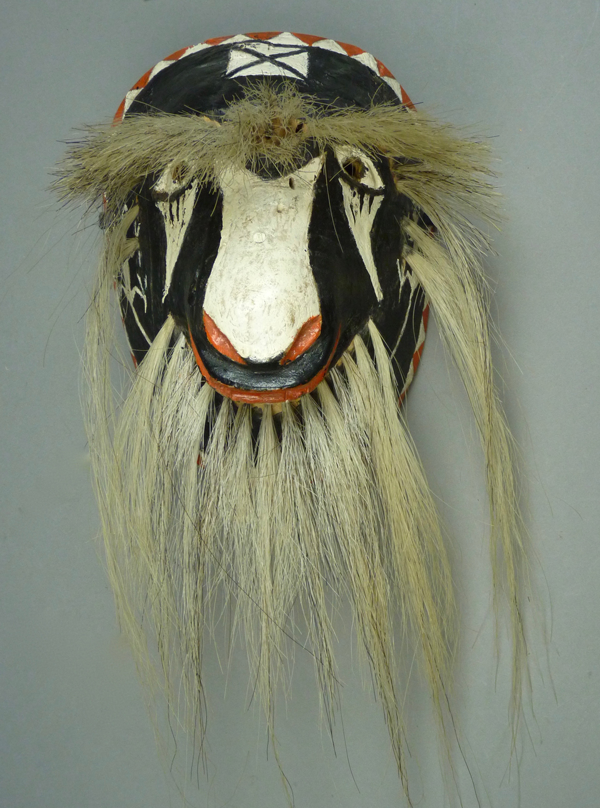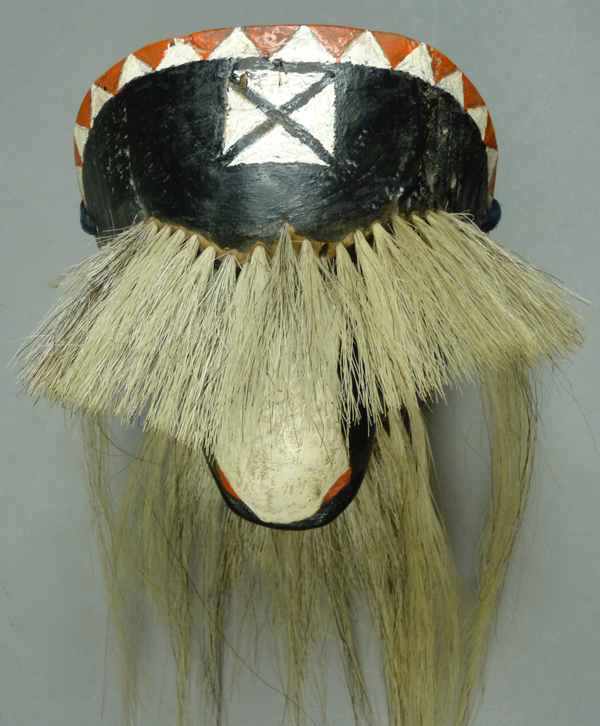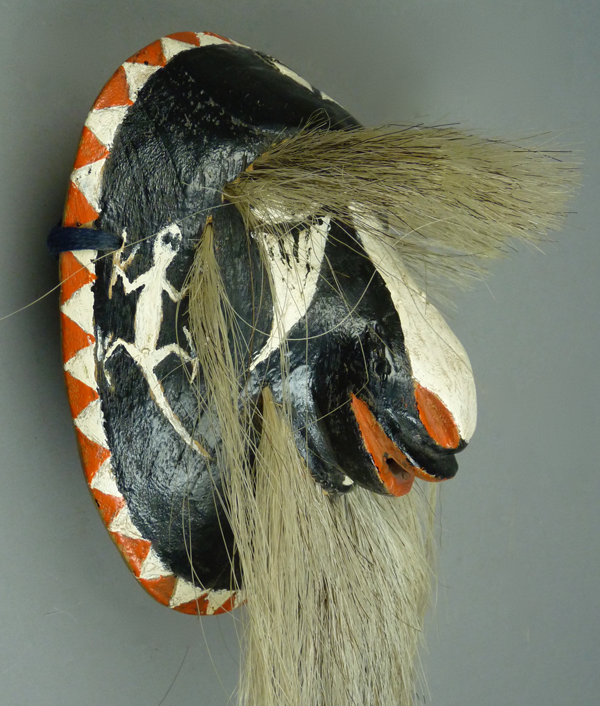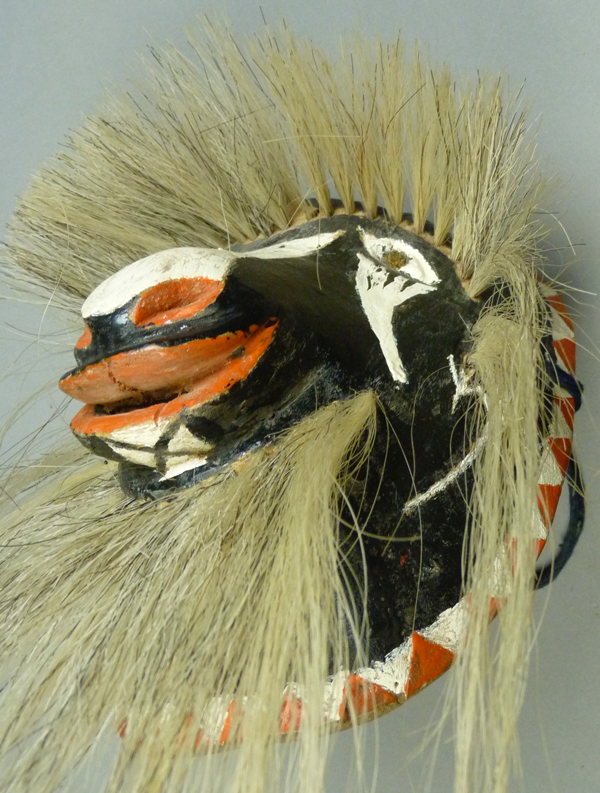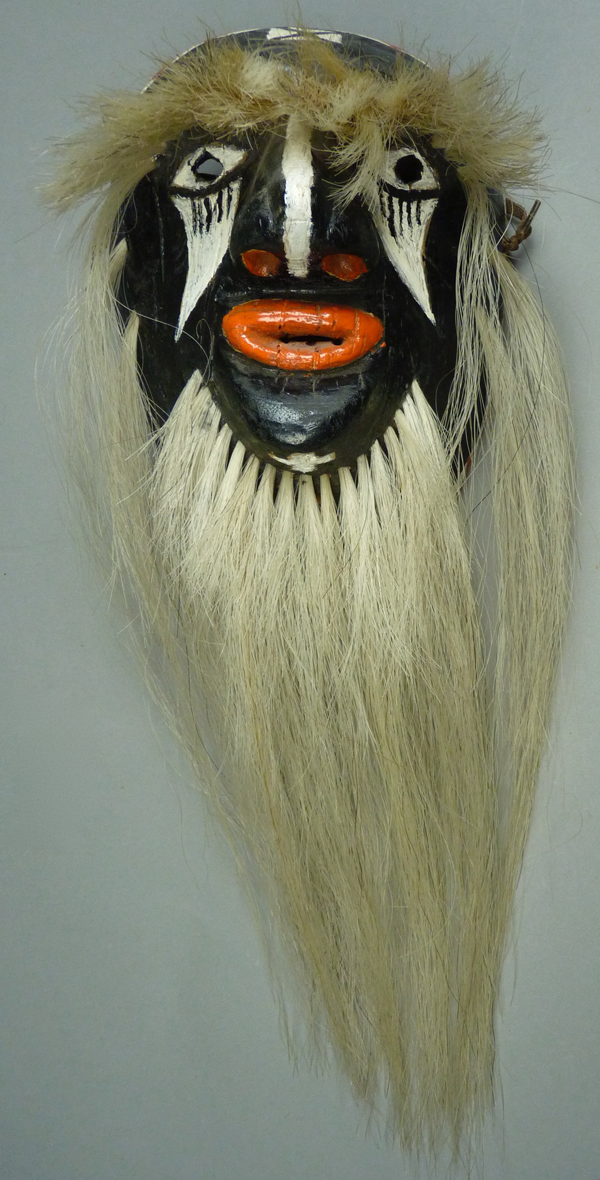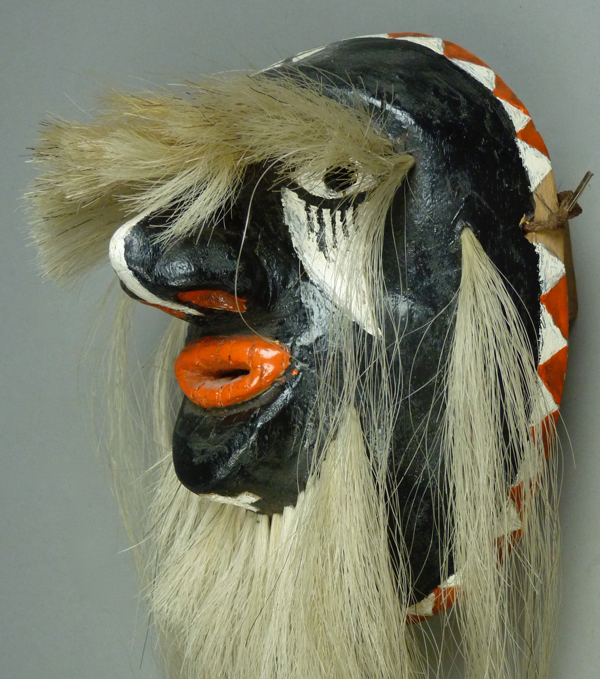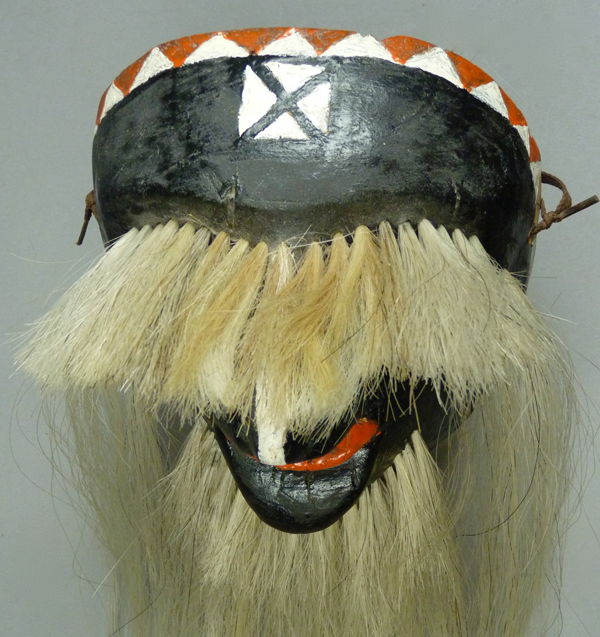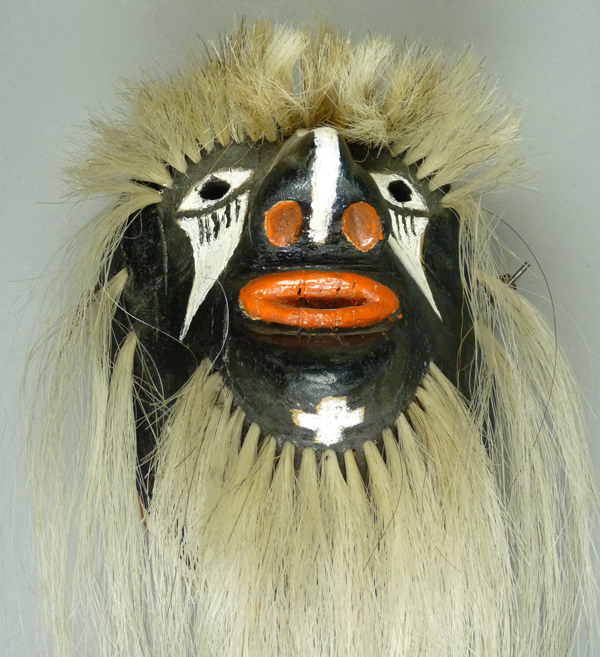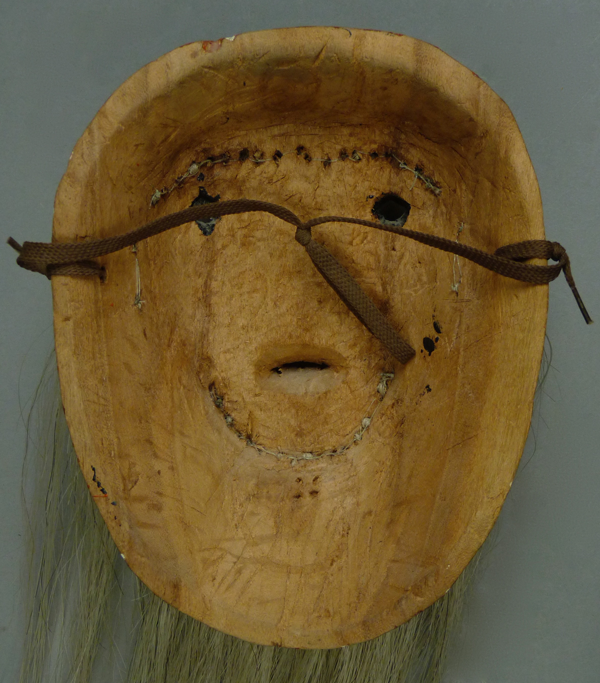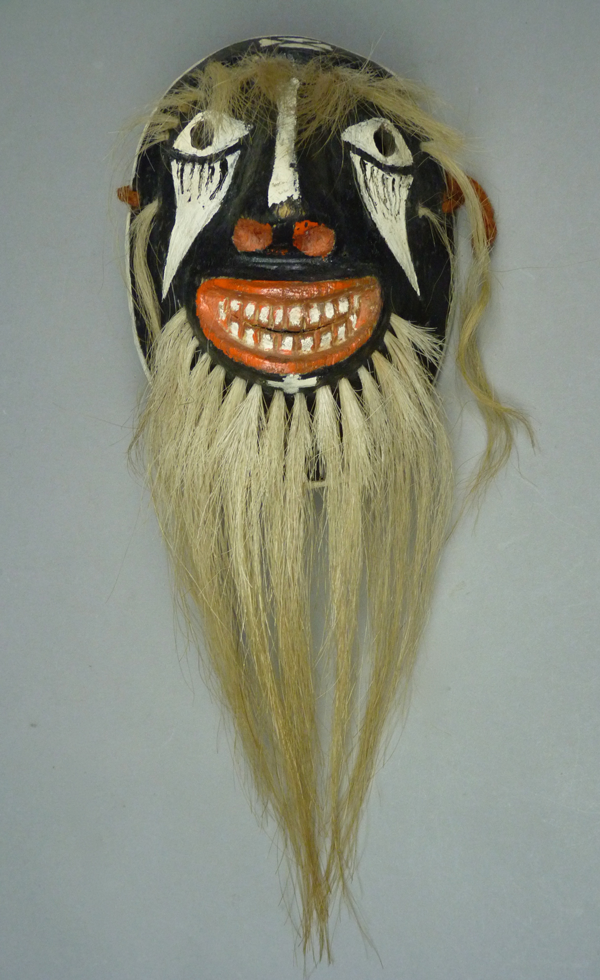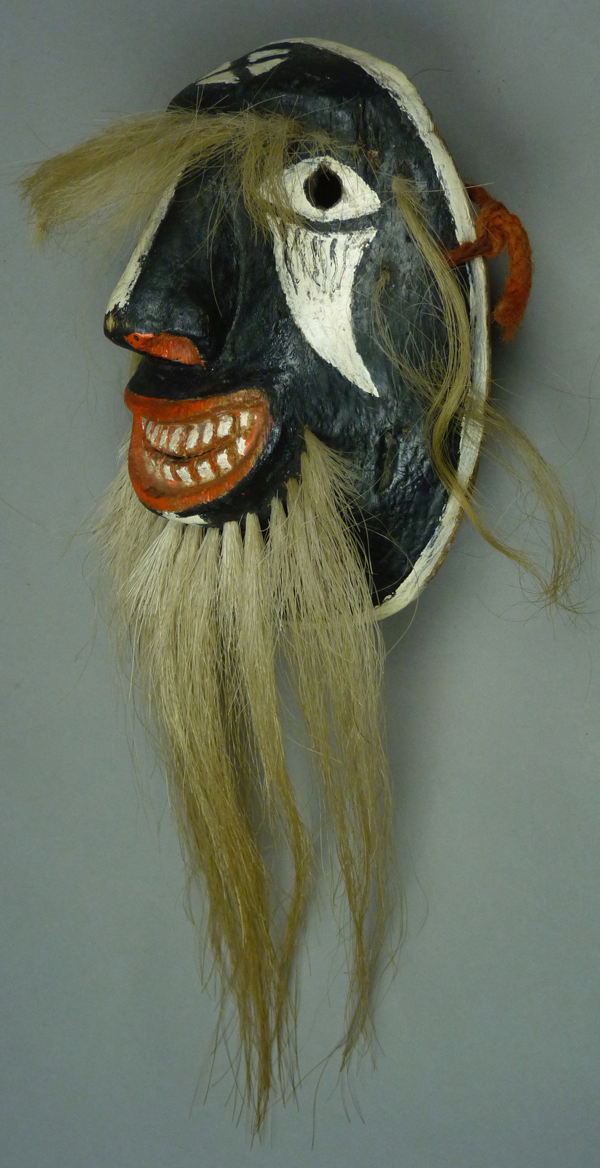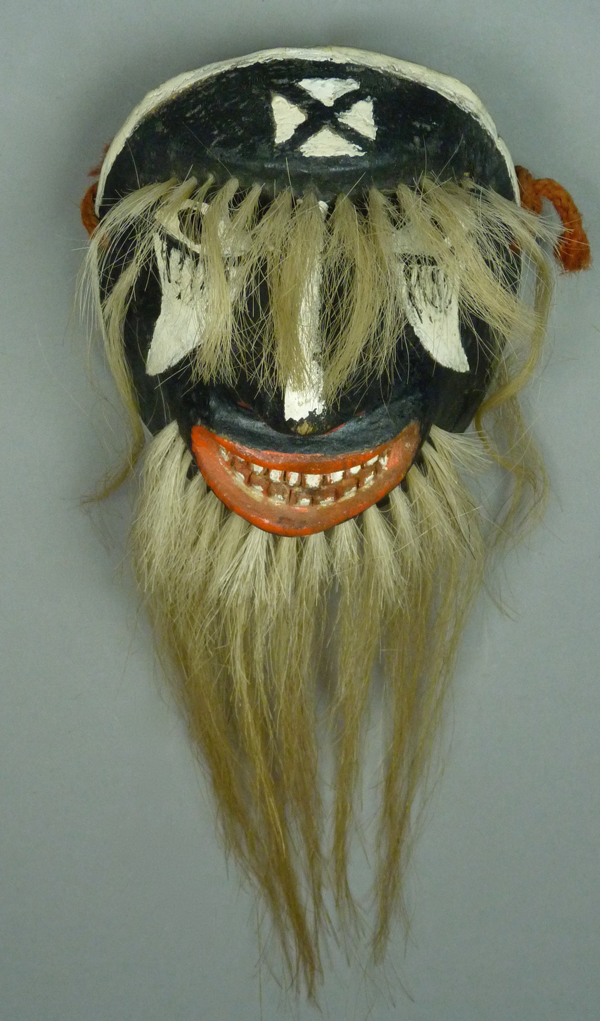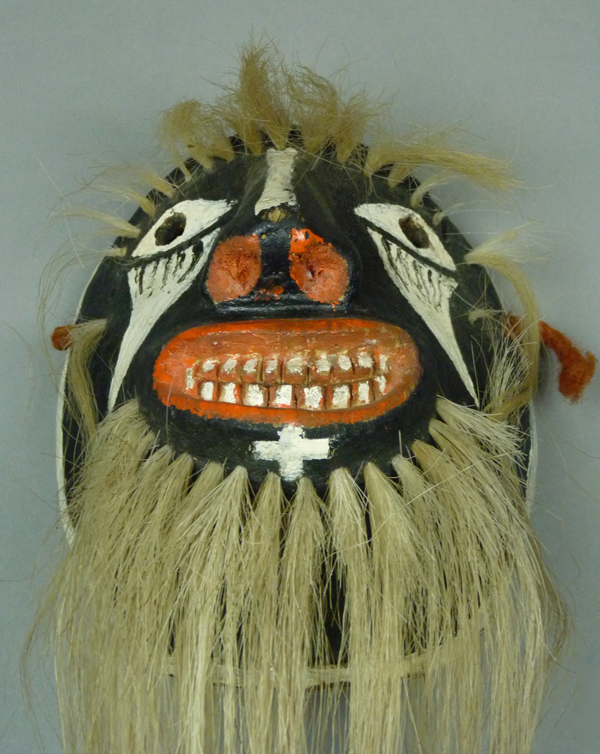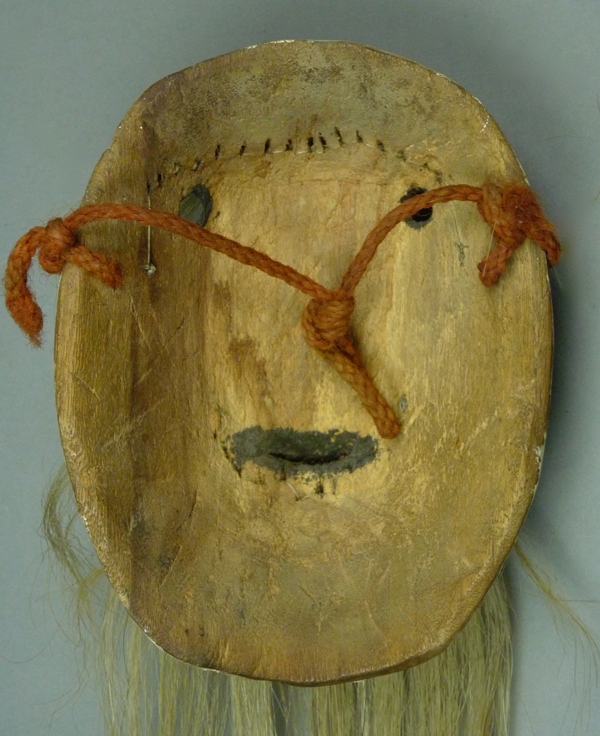In June, 1988 I bought several Yoeme (Yaqui) Pascola masks from the Folklórico gallery in Santa Fe, owned by Robin and Barbara Cleaver. I will introduce today’s post with one from that group that has a goat’s face. Like the mask that introduced last week’s post, this Goat Pascola mask came without any identified carver. However it had such distinctive design details that it proved relatively easy to identify, as I will now explain.
To begin with, I met a botanist in Tucson, Arizona, Richard Felger, who had known the carver, and my friend Tom Kolaz was also familiar with his work. Both agreed that my Goat faced mask was the work of a man some called Alejandro Reyes and others called Rexes Alegria (in an instance where the x is silent), as his full name was Alejandro Reyes Alegria. He was a carver and dancer from Potam, Sonora and he often traveled to Tucson to dance at Yaqui fiestas there. Richard Felger recalled that Reyes died mysteriously; convinced that his death was imminent, Reyes seemed resigned to this probability, sought no medical care, and soon he was dead. Here is this mask.
In this frontal photo one can see many typical features of this carver’s work. To begin with, here is his typical forehead cross, which one could describe as four triangles with parallel edges or as a square that has been subdivided by diagonal lines. Also typical are the triangles under the eyes, marked with vertical black painted lines. The painted lizards on the cheeks are also characteristic. He usually used this rim design, but that is a generic design that does not distinguish one carver from another.
Note the fine and carefully installed hair bundles that represent the brows and the beard. Many other carvers fail to attach these hair bundles so carefully.
This view of the face from below reveals a painted design under the chin. The side view that follows allows one to see that this design is nearly invisible in ordinary use.
In fact, this is another typical aspect of this carver’s masks, that he almost always strove to add a second cross under the chin, whether there was a suitable place for this or not, and irregardless of whether this second cross was easily visible. On this mask the cross is literally folded around the contour of the chin.
In this instance the second cross is identical to the one on the forehead, and this too is characteristic for this carver.
This mask is 7½ inches tall, 5½ inches wide, and 3½ inches deep.
The back of this mask is heavily stained, indicating that it has seen much use.
I found this carver’s masks irresistible, and eventually I was able to obtain two of his human faced masks; here is one of them. It was collected directly from the carver by Richard Felger in 1984.
One sees many of the same characteristics on this mask that I had noted on the goat mask—such as the same forehead cross and the same painted black lines on the triangles. There is once again a cross under the chin,although this one is a Christian cross.
We find the same generic rim design, but there are no lizards on the cheeks.
This mask has the same finely crafted hair on the brow and beard.
This mask is 8 inches tall, 6 inches wide, and 4 inches deep.
The back of this mask shows only mild staining from use.
Here is a second human faced mask by Alejandro Reyes Alegria from my collection. I bought it from Alyce Kyle.
This mask differs little from the other human faced mask, except for the cheerful and toothy smile.
There is a more simple rim design.
The forehead cross has been repainted, and lacks the crisp lines that Alejandro seemed to prefer.
This mask is 7 inches tall, 5¼ inches wide, and 3 inches deep.
As one might have expected from the repainted cross, this mask has seen a lot of use.
Next week I will share several other masks by Alejandro from the collection of David West, the owner of Gallery West, in Tucson. These include two more distinctive human faced masks and a canine Pascola mask that I especially admire, although I have no idea whether it represents a dog, a coyote, or a wolf.

